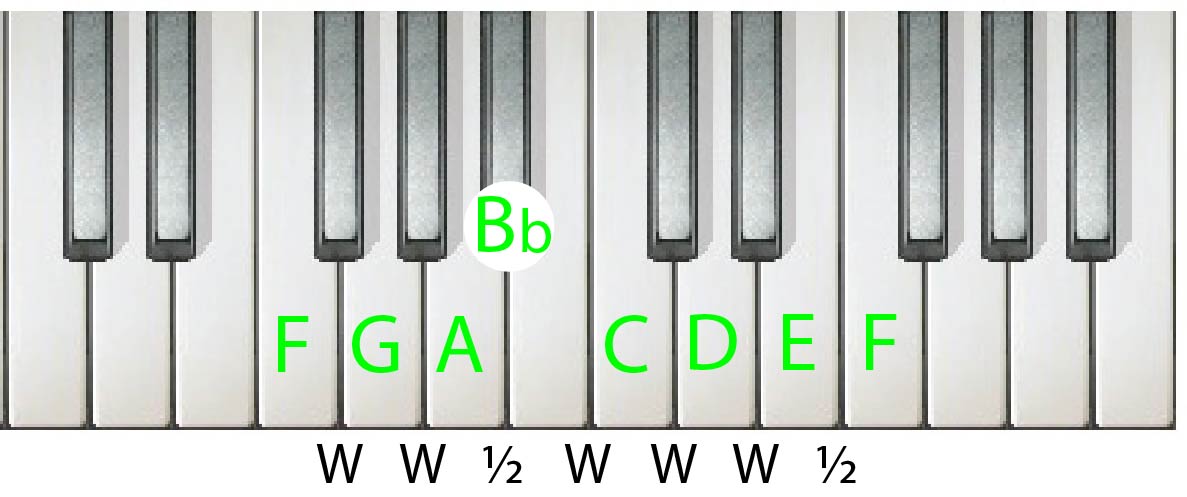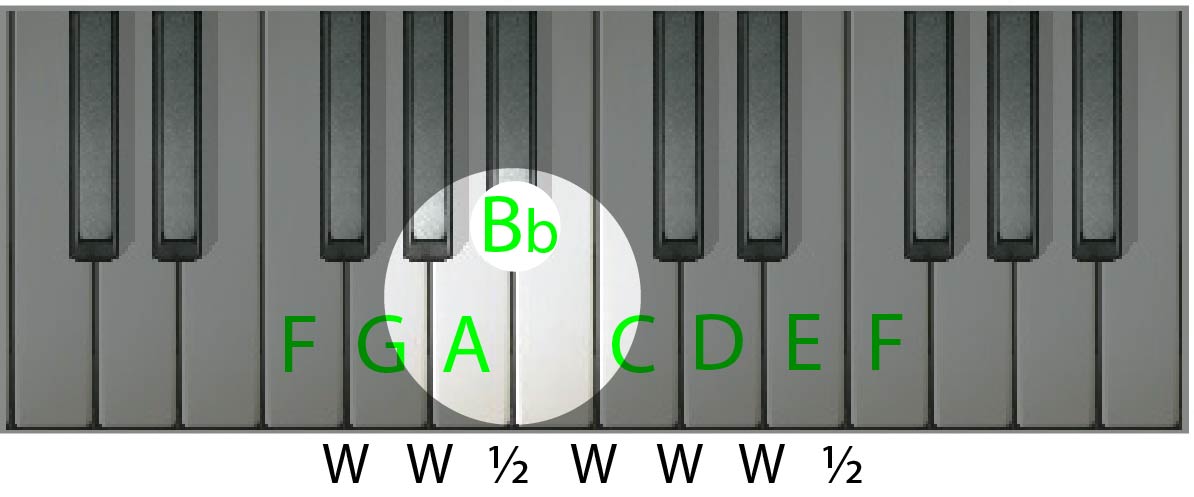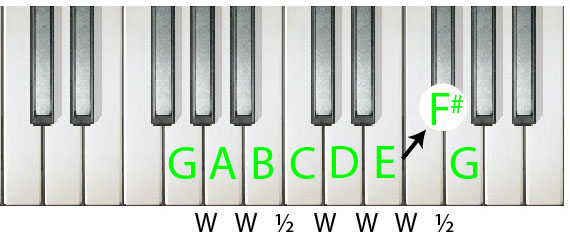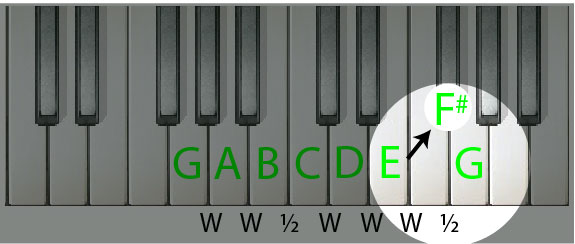In the previous tutorial, we learned that a Major Scale is made of a pattern of Whole Steps and Half Steps in this order:
If we were to start on a different note, such as F, but keep the same pattern of Whole Steps and Half steps, we would have an F Major Scale.

However, naturally the interval from A to B is a Whole Step.
By choosing Bb instead of B, we force the interval to become a Half Step.

We will play a G Major Scale by starting on G and following the pattern of Whole Whole Half, Whole Whole Whole Half.

However, naturally the interval from E to F is only a half step.
Therefore we replace F with F#, forcing the interval to become a Whole Step.

Fill out the worksheet below to practice your skills.
Once you have filled out the worksheet, you may go on to the next exercise.